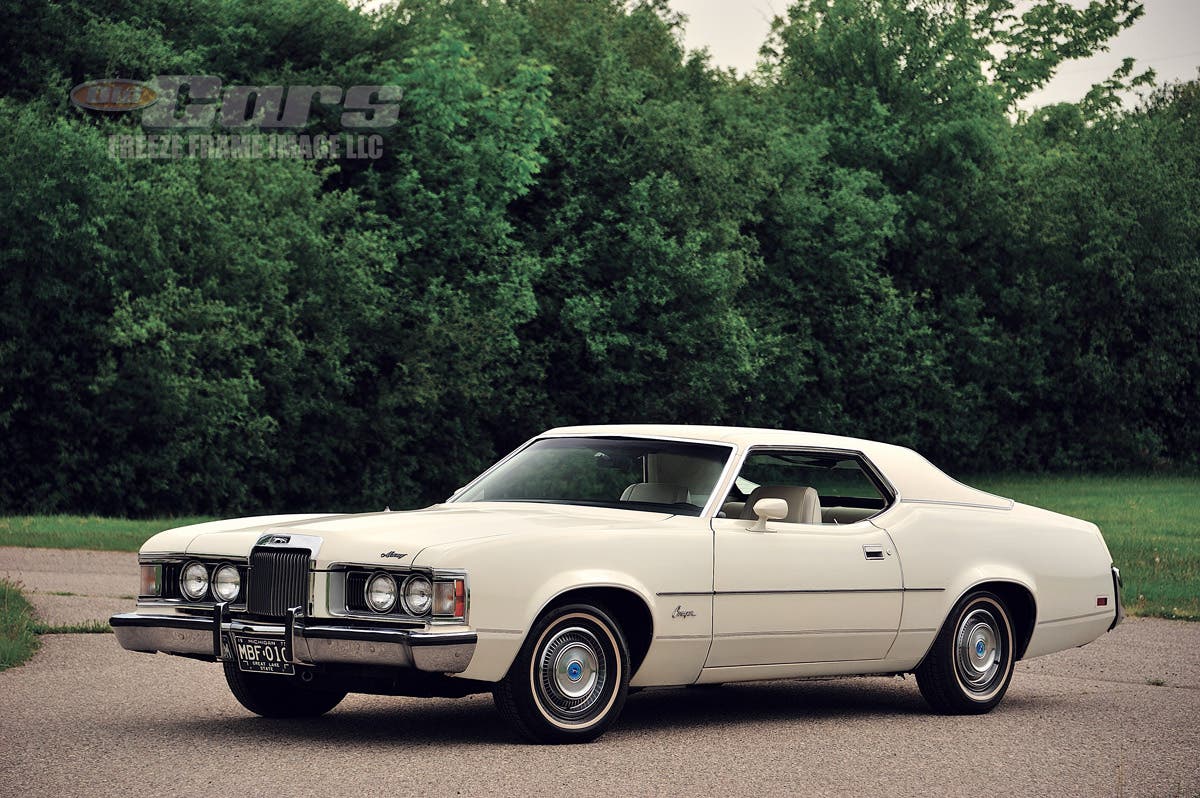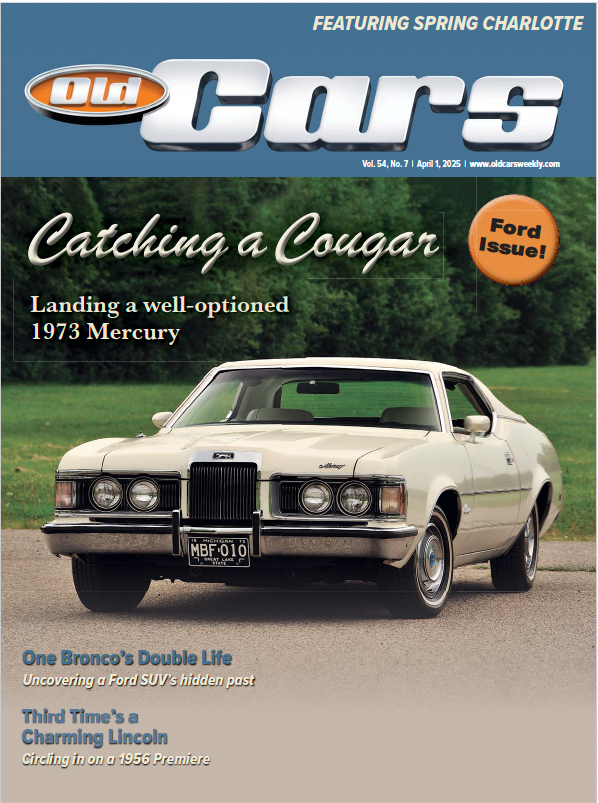Car of the Week: 1927 Franklin
Alan Gollakner had been restoring and reviving old cars for years, but he’d never even really heard of a Franklin. Until he bought one, that is. Then the fun really started for the Iron River, Mich., resident.
By Brian Earnest
Alan Gollakner had been restoring and reviving old cars for years, but he’d never even really heard of a Franklin. Until he bought one, that is.
Then the fun really started for the Iron River, Mich., resident. After years of working on Mustangs, hotrods, muscle cars and other hobby mainstream machines, Gollakner dove head first into the strange and fascinating world of Franklins — those unusual, wonderful, air-cooled, aluminum-bodied, trend-bucking gems built in Syracuse, N.Y., from 1902-1934.
Gollakner can look back and laugh at the whole buying experience now. At the time, he was considering buying a Model A Ford from the same collection that the Franklin was in, and when he started considering the Franklin, he figured the only thing it might be good for was a street rod. “There was a guy that had been collecting cars for years, and he had 34 cars, I think,” Gollakner recalled. “He died and his wife had an appraisal done on his cars, and she was planning to have an auction, but she decided that if she could get the top appraisal price for them, she’d sell them outright.
“I was, I think, the second person to get a look at the collection. I had gone there because there was a ’31 Ford Victoria, and I looked at that one and it was all butchered up, so I started looking at the other cars.
“It wasn’t in the plan to start restoring anything, but I saw this Franklin, and it was unusual, and when you opened the doors open up you could just here the ‘click, click.’ I thought, ‘Wow, this thing is really solid' … I had no clue about Franklins, but I ended up buying it!”
Gollakner soon began networking with other Franklin enthusiasts through the H.H. Franklin Club and giving himself a crash course on the history of the orphan make. He began collecting some parts that he needed to restore the car’s exterior, and found more help than he expected. “I checked the registry and found a guy in Wisconsin that might have some stuff and I called him up and he said he’d have to go check. About a week later a big box showed up. He sent me some stuff without me even paying him first. He said ‘If that hood hold-down you needed works out, just pay me 5 bucks.’
“It’s a good group of guys out there.”
Gollakner didn’t know it at the time, but the three-person coupe that he acquired was also an exceedingly rare car. According to the Franklin Club registry, only about 114 cars from the 1927 model year remain, “and I think only eight of them are coupes like mine,” Gollakner said. “No, I didn’t know that. Not at all. I had no idea.”
The tale of the Franklin company began shortly after the 1900s dawned when John Wilkinson, a young engineer, designed a pair of air-cooled prototype vehicles for the New York Automobile Company. Eventually, Wilkinson hooked up with an investor named Alexander T. Brown and another man named Herbert H. Franklin, who owned a company, H.H. Franklin, that made die castings. The trio went into the car-building business together, and their cars proved to be the most successful and enduring air-cooled cars of the era.
Production of Franklins began in 1902 and the first car was sold on June 23, 1902, to a New York City man named S.G. Averill. The first cars were all four-cylinder runabouts built on wooden frames with two-speed transmissions and four-cylinder, transverse-mounted engines. The cars evolved over the years, but they maintained their full-elliptic suspension — which could help car owners squeeze as many as 2,000 miles from a set of hard rubber tires — and the wooden frame construction lasted through 1928.
Franklins were known for their build quality, reliability and extensive engineering. Wilkinson was driven to produce efficient, trouble-free cars, and always seemed to be at the forefront of new developments in the auto industry. In 1906, Franklin added six-cylinder engines to its lineup and by 1914 the four-cylinder engines were gone altogether. For the 1915 model year, the company switched to aluminum pistons — another cutting edge move for the time.
The company gradually grew during the 1910s and '20s and, in 1925, Franklin began offering custom bodies from some of the most well-known companies in the coachbuilding business. Franklin even offered a boattail speedster body style in 1925 — a first in the U.S. car business and a daring leap for a company known primarily for its dependable, air-cooled sedans.
Franklin hit a high-water mark when it built 14,432 cars for 1929. Just when things began to look brightest, however, the stock market crashed in October of 1929, and Franklin sales plunged to 6,043 cars the next year. Things unraveled quickly from there and the company was out of business after building just 360 cars for 1934.
A total of 8,103 Franklins were built in 12 different configurations in 1927, including Gollakner’s coupe. The car lived most of its life in Nevada, he discovered, then later was sold to a company in Minnesota. Eventually, it wound up in a Michigan’s Upper Peninsula, making it a particularly rare bird for that corner of the world.
When he brought it home, Gollakner knew he’d have to put his skills as a professional paint and body man to use, but he also figured he had a lot of car to work with. “[The previous owner] had the interior and the top done and he painted it bright red — over the chrome and everything!” he laughed. “All the upholstery had overspray on it and everything. Maybe it protected everything, I don’t know.
“Other than the paint and body, which I knew that I wouldn’t have a problem with, it was pretty decent. It was good and solid. The fenders were dinged and banged up, and of course there were door dings, but being an aluminum body, it wasn’t rusted. Basically, it was just taking it apart and putting it back together. It took me about three months.
“I stripped it down to the aluminum. I took it all off with a razor blade. I didn’t want to use a chemical stripper and didn’t want to use heat on the metal, so I used a razor blade and it took about three days and I thought it worked fairly well. … It has all original wood in it and the wood is really like new. It’s really amazing. It has a laminated ash frame and everything is just really nice. The running boards underneath are all original wood, and it’s really nice. You don’t want termites around this thing! Even the wood-spoke wheels, all I had to do was wipe them down with a coat of lacquer thinner and give them a coat of marine paint and they look like new."
Mechanically, the Franklin was also in pretty good shape, Gollakner said. He had to do some work on the vacuum fuel pump. Keeping the Franklin in good running order hasn’t been much of a problem he added, but it has definitely been interesting.
“The engine doesn’t have overhead oilers, so you have to soak felt pads that sit on top of the valves every 400 miles,” Gollakner laughed. “But it’s not really that bad. Each cylinder has, like, a pan on top and the whole thing has almost like an oil pan over the top of that. The cylinders have copper fins cast in them for cooling. They don’t even have a temperature gauge in it, so I guess they have a lot of faith in their engines.”
A pair of external band brakes on the rear wheels do the stopping. The non-synchromesh transmission has given Gollakner plenty of practice on his double-clutching technique.
"But it’s got big gears, so grinding’s OK,” he said.
The interior has been upholstered in leather, and the original four-spoke wooden steering wheels remains. The simple dash contains gauges for speed, amps and oil. “The gas gauge is outside, back by the spare tire,” Gollakner added.
When he was ready to repaint the body and fenders, Gollakner did some homework on the colors that were available for 1927 Franklins. He went with a distinctive blue with authentic black pinstriping, which he also did himself.
Gollakner mostly reserves his Franklin for car shows and parade duty these days, “but when my newer car broke down, I drove it for about three weeks while I was waiting for parts … It drives great, it’s just not a speed demon. Cruising speed on the highway is about 45 in it.”
Gollakner isn’t certain, but he probably has the only Franklin in Michigan’s Upper Peninsula, and he may have the only one for several hundred miles in any direction. One things is for certain, the car is a conversation piece wherever it goes.
“Yeah, definitely explanations are needed,” Gollakner chuckled. “A few of the old-timers around here have heard of them and maybe one or two said they have seen one before, but generally no, nobody knows. Mostly it’s, ‘What is that?’ I don’t think there’s been too many in Upper Michigan.
“That’s what the surprise was, finding one up here.”
_______
Got a car you’d like us to feature as our “Car of the Week“? We want to hear from you! E-mail us and tell us all about it.
_______






